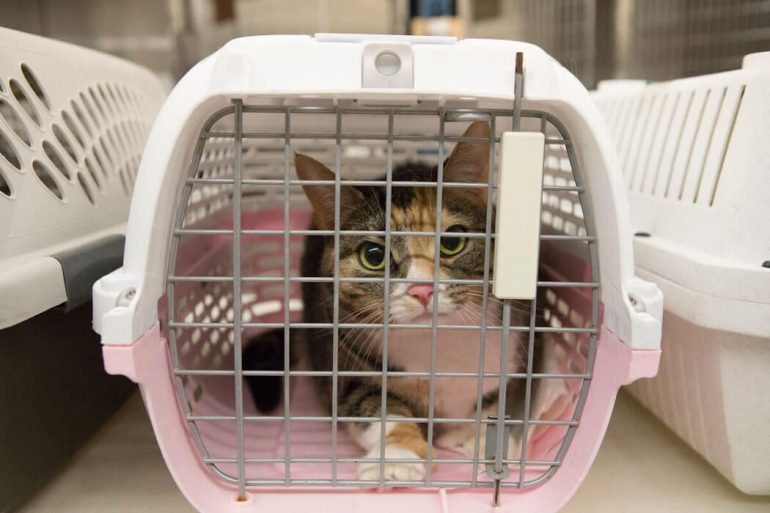Technology has a massive opportunity to solve problems in the world. Projects across the globe are tackling challenges like climate change, waste removal, clean energy, clean water, and increased access to food. But sometimes tech can have the biggest impact helping those with the smallest footprint.
Toronto Cat Rescue is just one of the 15 charities participating in Capital One’s Digital for Good Tech Jam and Summit this year. The project, spearheaded by Capital One and driven by volunteer developers, designers, and other members of the tech community, helps charities solve their challenges by empowering them with innovative technology solutions.
Speaking to BetaKit ahead of the Digital for Good Tech Jam, leaders from Toronto Cat Rescue and Big Brothers Big Sisters of Canada explained how they hope to use technology to improve their organizations. While one charity focuses on four-legged friends and the other on underserved youth, their goal is the same: get more done with tech.
The purrrrfect match
When Toronto Cat Rescue got started, the charity had a simple mission: help cats that shelters couldn’t – or wouldn’t – take.
“Years ago, it used to be that cats were euthanized because there was no space or they weren’t doing well in a shelter,” said Toronto Cat Rescue (TCR) Executive Director Belinda Vandersluis. “With our partnerships, we’ve been able to bring those rates down to a negligible amount.”
The organization grew from a grassroots, small player into a large organization that helps over 2,800 cats per year. Vandersluis said this success comes from its network of over 400 foster homes and 1,000 volunteers.
RELATED: How Capital One’s Digital for Good program tripled the number of charities it will empower with tech
With success came challenges. Toronto Cat Rescue often works with cats that have special medical or environmental needs that make shelter life difficult or impossible for them. So as cats come into its ecosystem, it’s a mad-dash to figure out which foster home has the right training or resources to help each individual cat. This takes hours of manual work on behalf of volunteers, leading to lower quality of care for the cats during the search, Vandersluis reveals.
“For example, a cat comes into our system maybe that needs bottle-feeding – a young kitten that doesn’t have a mother,” said Vandersluis. “We need a foster home that has experience with that.”
At the Tech Jam, Vandersluis is working with the Toronto Cat Rescue volunteer technology team to build an algorithm that will match cats instantly with relevant foster homes.
This ‘Tinder for foster cats’ is based on data the charity already collects. Vandersluis said that Toronto Cat Rescue documents every foster home based on “their experience, their skills, [and] their training.” On the flip side, when a cat comes into the ecosystem, volunteers build a list of the cat’s unique needs.
Vandersluis argued that leveraging technology is not just about convenience, but also scaling impact. The executive director said that many volunteers are “doing this work on the side of their desk [or] on evenings and weekends, so a system really helps make things more efficient for them. But it also helps save the cats because the better the matches, the better the cats do.”

The kids are alright
When Big Brothers Big Sisters of Canada started over 100 years ago, its goal was to mentor youth facing adversity to give them a chance at a better life. The charity still has that goal, and in Canada alone it has grown to 21,000 volunteers, with 1,400 paid staff helping over 42,000 youth via the organization’s 100 partner agencies nationwide.
Jody Lundrigan, the national VP of communications and partnership development for Big Brothers Big Sisters of Canada, said the team is facing a two-fold challenge similar to Toronto Cat Rescue: knowing what kind of tech to use and then figuring out how to use it once it’s there.
At the Tech Jam, Lundrigan hopes to address both challenges with an impact-first focus. Lundrigan said that the key question for any new technology initiative is, “how can tech solutions really help us better serve the young people in our programs?”
After an in-depth brainstorming session prior to the Tech Jam with the Capital One and volunteer teams, everyone decided that training was a key lever. The organization onboards so many volunteers and staff throughout the year that training has become a major time delay – and every delay in training means a delay in a young person receiving mentorship.
Once the problem was identified, the question evolved into how technology can best support mentors in order to make a greater impact in the lives of youth across the country. The team ultimately decided on a meet-you-where-you-are training repository where staff can log in, complete trainings, and identify next steps quickly and efficiently.
“If we all get on the same page, and identify who we serve, how we serve them, and what we’re trying to achieve, that’s going to make us a stronger organization,” said Lundrigan.

“It’s not the product itself, it’s what the product will do.”
While teams at both charities knew that tech could help them, they admitted to struggling with what kinds of technologies to build. In the startup world, new technology can be as complex as it is powerful. In the charity world, with many volunteers and part-time workers, and most not professionally knowledgeable about technology, intuitiveness matters more than flash.
“A good 200 to 300 volunteers will use any of these technologies that we are creating… [so] it’s a really important piece to have something very intuitive,” said Vandersluis.
These downstream needs came about through Capital One’s brainstorming process with charities selected for the Digital for Good Tech Jam, which Lundrigan said began with a design thinking workshop between the charity, Capital One, and the volunteer technology teams. Instead of having charities fill out a basic needs assessment then going away to build a solution, teams brainstormed alongside charity leaders to identify not only what the organizations wanted to accomplish but also what limitations or issues may arise that the team will need to work around.
Lundrigan said the process was really helpful because the Capital One team “didn’t come pushing a product or solution. They worked to understand our strategy and what our goals were as an organization. Then, together, we landed on a platform that worked.”
Using a customer discovery method of feedback and collaboration, the Capital One and volunteer teams were able to focus on how technology can scale impact and integrate with the charity’s existing systems. That way, the organizations could continue to benefit from the systems long after the Digital for Good Tech Jam.
For Lundrigan, the impact-focus in discovery brainstorming meant she could think about supporting agencies across the country. “It’s not the product itself, it’s what the product will do.”
BetaKit is a Digital for Good media partner and this article is sponsored by Capital One.


